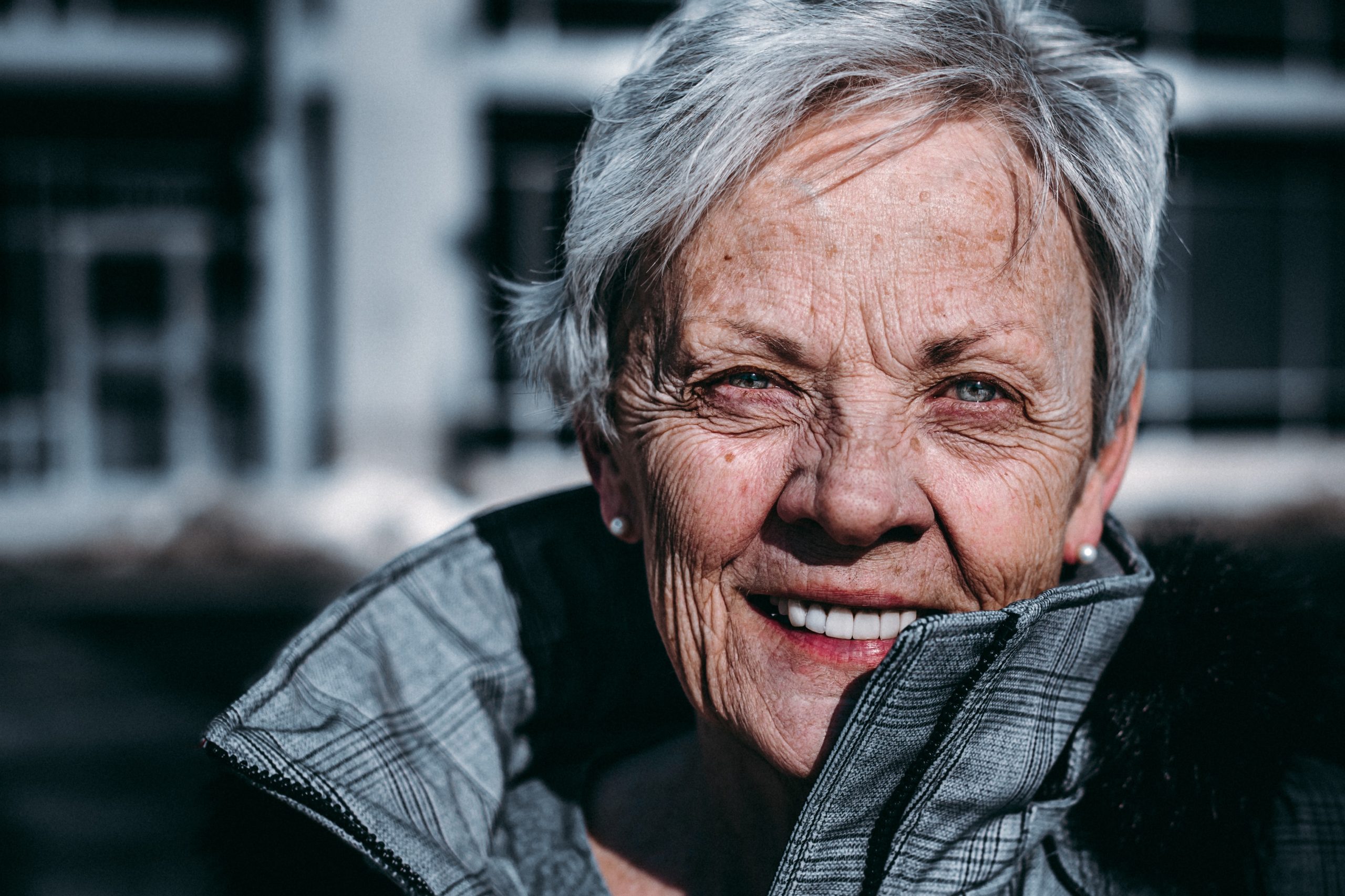Negative stereotypes about older people— whether you believe them or they come from others—can cause real harm.
By Wendy Haaf
At some point, 65-year-old Donna Wilson began noticing something odd: when she was in line at, for example, the deli, the server would sometimes tend to a younger customer who hadn’t been waiting as long as Wilson had. Wilson, who’s still very much part of the full-time workforce in her job as a professor and researcher in the nursing faculty at the University of Alberta in Edmonton, surmises that the server’s unconscious, erroneous assumption was, “The other customer is younger and therefore has to get back to work.”
A less charitable interpretation might be that the clerk treated Wilson as if she were invisible—a phenomenon many Canadians over 60 will readily recognize.
While many of us might dismiss such an occurrence as merely irritating, it is in fact a minor manifestation of a problem that the World Health Organization (WHO) considers a grave threat to global health: ageism. According to the WHO, the term refers to “stereotypes, prejudice, and discrimination directed towards people on the basis of age.”
In fact, in a systematic review of 422 studies conducted for the WHO, 96 per cent of the studies found that ageism was associated with worse outcomes in every health domain examined. Yet, “when you look at the literature, there’s been far more research on other forms of prejudice,” says Alison Chasteen, a professor and the graduate chair in the Department of Psychology at the University of Toronto.And while ageism comes in a variety of guises, from the institutional or systemic (such as excluding older adults from clinical trials) to the interpersonal (such as a health professional speaking to someone with grey hair as if to a five-year-old or addressing an older person as “sweetie”), the most damaging type stems from negative stereotypes that take root in our psyches by age four.
“The association between ageism and health outcomes is strongest for self-directed ageism,” states the 2020 WHO
Global Report on Ageism. “Internalized ageism is the most insidious type, because often we’re not even aware of it ourselves,” says Helen Hirsh Spence, the founder of the Ottawa-based Top Sixty Over Sixty, a social enterprise formed to help older adults reinvent themselves to meet new challenges.
“There’s research that suggests that if older people endorse negative beliefs about aging, they might have longer recoveries from chronic illnesses and higher chances of being hospitalized; they may even have shorter lifespans,” says Gail Low, an associate professor in the Faculty of Nursing at the University of Alberta in Edmonton.
There’s evidence that internalized ageism can cut lifespan by as much as 6.5 years, compared with people who have a more positive outlook on getting older.
There are at least three different ways that this type of inner ageism can harm us: the first is by influencing our psychological well-being.
“There are a lot of mental harms that can happen due to negative beliefs about aging,” Low says. “Ageism has been linked to anxiety and depression,” she notes; these problems are themselves linked with poorer health. Similarly, preliminary findings from Low’s research—a small Alberta study—suggest “that people who attribute their losses in physical function to age tend to have more negative outlooks,” she explains.
By contrast, Low says that a study she recently concluded with a team of researchers “found a powerful link between accepting who you are at your age and experiencing fewer symptoms of depression.”
Studies also hint that the negative attitudes about age that surround us in Western culture can also be damaging in the short term. A number of studies have found that older adults’ performance on certain tests, such as memory tasks, suffers when they’re briefly exposed to ageist stereotypes beforehand. Over the longer term, four out of five studies reviewed by the co-authors of the 2020 WHO report found a relationship between cognitive impairment and ageism. For instance, in a study that followed thousands of people in Germany over several years, positive self-perception of aging seemed to slow the overall decline in cognitive-processing speed, while the reverse was true for negative self-perception of aging.
Unconscious self-directed ageism can also exert negative effects upon us by changing our behaviour. Studies conducted by Becca Levy, a researcher at the Yale School of Public Health, have found “that if you have a more stereotypical, negative view of aging, you’re less likely to engage in different kinds of preventive health behaviours, such as hearing-aid adoption,” Chasteen explains. “People may be less inclined to have health screenings or attend to health concerns,” Low says. After all, Wilson observes, “if you think it’s all downhill from here and you’re going to be sick, you don’t bother to exercise; maybe you don’t get out in the winter to walk because you’re afraid you’ll fall and break your hip.”
Since we now know that some of the physical changes and chronic illnesses society once accepted as a normal part of aging are due to or exacerbated by a sedentary lifestyle and inactivity, such stereotypical ideas “can have some pretty significant implications for how you try to influence your own aging process and the quality of life you’ll experience later on,” Chasteen says. (Of course, the assumption that poor health is universally preventable with exercise and a proper diet overlooks social determinants of health such as income, which can exert powerful influences over how successfully we age.)
Ageism may sometimes cause “people who are older and frail or who don’t meet the beauty norms prevalent in media and social media” to withdraw or isolate themselves socially, explains Andrew Wister, a professor in the Department of Gerontology and the director of the Gerontology Research Centre at Simon Fraser University in Vancouver. As has been established, both loneliness and social isolation are tied to an increased risk for a number of health problems.
Ageism can also affect our bodies more directly. Authors of the WHO report cite research showing that older people who were subliminally exposed to ageist stereotypes saw a more marked cardiovascular response to stress, which may increase the risk for heart disease in the long run.
Fighting Back
When we accept ageist stereotypes, we can sabotage our potential and shrink our future horizons.
“In my opinion, we—the elder generation—perpetrate ageism probably more than any other group; people don’t realize the extent to which they are self-limiting,” Top Sixty Over Sixty’s Helen Hirsh Spence says. “Ageism thwarts their self-interest, stops them from doing anything to challenge themselves.” For instance, she says, had she held such beliefs, “I wouldn’t have started a social enterprise” after age 60—nor would her organization’s ReSet workshops have been available to other older adults, helping them to overcome internalized ageism.
But while it’s all very well to understand how our internalized age bias hurts us, how do we go about fighting back against it?
For one, we can try to catch ourselves when we realize we’re helping perpetrate ageist stereotypes and challenge others when they do the same. Take those supposedly humorous birthday cards that portray older adults as hopeless with new technology or physically decrepit: you can avoid buying them, and, should you receive one, you might laugh but gently point out that the underlying assumptions are ageist, Wilson suggests.
“We need to try to change people’s views about aging and to dispel some of these stereotype-based myths,” Chasteen stresses.
To that end, you could examine the language you and others use in talking about age by checking out resources from the Reframing Aging Initiative (reframingaging.org), a US body that “is doing a lot of messaging and education to get people to rethink the way we talk about aging and older people,” Chasteen says. For example, research shows that it’s possible to reduce implicit age bias by tweaking messages to emphasize the contributions older adults make to society, as well as the wisdom and energy one accumulates throughout life. Viewing ourselves as part of a larger societal whole in which interdependence is a source of strength, rather than focusing on differences between groups, tends to make people more apt to support measures that help or protect older adults, too. “There should be a cultural and societal shift in how we view people of all ages, colours, genders, and sexual orientations,” Wister says. “We need to embrace the fundamental principles of equality in creating a more positive world.”
If you feel that someone is treating you unfairly based on your age, Wilson urges, “stick up for yourself, because you are a person with rights, regardless of what your age is.” For instance, in Wilson’s deli scenario, in which she was overlooked by the clerk, politely point out that it’s actually your turn.
Should your physician dismiss a symptom or condition (such as hearing loss or depression) as an inevitable part of getting older and therefore not worth addressing, stand your ground—or bring a more assertive friend or family member for moral support during your next visit. Wilson, for example, often accompanied an older relative to medical visits. “His doctor would say, ‘You’re old, so I’m not going to order this test for you,’” she recalls. “I had to prime him to stick up for himself.” Eventually, the physician got the message.
We can also take steps to change the world around us by joining or forming groups that advocate for older people, voting for senior-supporting candidates, and engaging in society.
One way of doing the latter is to volunteer—an activity that “can improve people’s sense of worth and self-image,” Wister notes. Activities in which people from different age groups work together, such as school help programs, “are very good to foster support across generations and reduce ageism,” he adds.
Indeed, according to the WHO, intergenerational interactions are one of the most effective ways of reducing ageism against older people; they show promise for reducing ageism against younger people, too. Less formal exposure to those outside of our own age group can help break down stereotypes, as well. In a study that spanned 25 European countries, both older and younger people who reported cross-generational friendships tended to be less ageist.
Time spent with members of younger generations appears to inoculate us against a “stereotype threat” against ageism, in which older people conform to, or fear they’ll conform to, negative stereotypes about aging.
According to the WHO report, “older people who have positive contact with their grandchildren are less likely to be negatively affected by stereotype threat.” (Stereotype threats faced by older people in more academic settings, for example, might lead them to perform more poorly than they otherwise would on memory tests.)
Overall, the WHO says that intergenerational contact can “lead to improved health and psychosocial well-being, increase self-esteem, decrease distress and loneliness, and lead to a greater sense of social connectedness and intergenerational solidarity.”
While we may have grown up with a mental image of older people as stooped figures relegated to a rocking chair on the front porch, today’s kids “have older people all around them who are vibrant, bright, and confident,” Wilson says. We can hope that’ll help prevent them from forming prejudices against their future selves.
In the meantime, the current cohort of elders is wellplaced to rewrite the narrative surrounding aging, given their numbers and history of activism. For instance, cosmetic companies have begun to bow to pressure to select older models and brand representatives “due to protests from our generation,” Hirsh Spence says, adding that it’s a generation that “has made a fuss about everything if they didn’t like it.”
Photo by Ravi Patel on Unsplash






